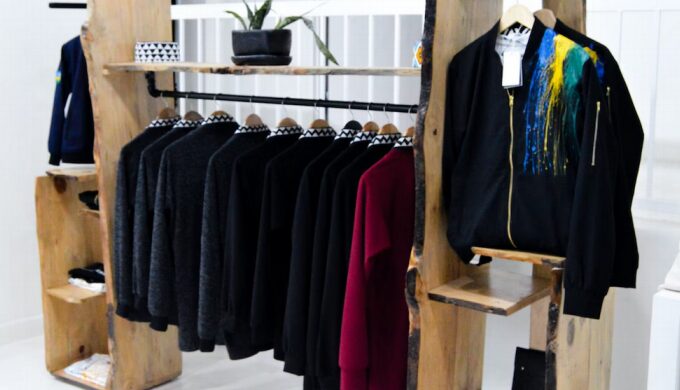The global market for second-hand clothing is experiencing exponential growth, driven by environmental awareness, shifting fashion trends, and increasing demand for affordable clothing. For B2B wholesalers, distributors, and importers, this presents a prime opportunity to tap into a booming industry. Sourcing bales of clothes for resale can be highly profitable if you understand where to find the right suppliers and how to navigate international trade effectively.
Understanding the Global Demand for Used Clothing Bale
Across Africa, Asia, South America, and Eastern Europe, the demand for Used Clothing Bale continues to surge. This trend is fueled by several factors: rising populations, increased urbanization, and a growing appetite for branded and quality garments at low prices. Importers and wholesalers in these regions can take advantage of the massive availability of second-hand clothing from high-consumption markets like the USA, UK, Canada, and parts of Europe.
According to industry reports, the global trade in used clothing is expected to grow significantly over the next five years. Retailers and market vendors in developing countries rely heavily on B2B partners to supply bales of clothes that meet local style preferences and quality standards. This presents a golden opportunity for new entrants to tap into this high-volume, low-cost segment.
How to Enter the Second-Hand Clothing Business
Starting a wholesale second-hand clothing business begins with research and sourcing. Whether you’re an importer in Kenya, a distributor in Pakistan, or a buyer in the Philippines, the steps are relatively similar:
- Identify Market Demand: Understand what types of clothing are popular in your target markets—casual wear, children’s clothes, winter apparel, etc.
- Choose a Sourcing Country: The USA, UK, and South Korea are leading exporters of used clothing, each with their own quality and pricing advantages.
- Find a Reliable Supplier: Choose a company that can supply sorted, graded, and securely packed bales of clothes for sale.
- Establish Logistics and Shipping: Work with freight forwarders who specialize in textile shipping to ensure efficient delivery to your port.
- Comply with Regulations: Understand your country’s import policies, hygiene standards, and customs duties for second-hand clothing.
Where to Find Reliable Suppliers Offering Bales of Clothes for Sale
Finding a trustworthy and efficient supplier is essential to succeeding in the used clothing trade. Look for companies that:
- Sort clothing into grades (A, B, C) to match your budget and resale requirements
- Offer transparency in quality control
- Have export experience to your specific country or region
- Provide consistent bales of clothes for sale that match your order specifications
Some of the most reliable suppliers are based in the USA, known for offering high-quality garments and organized sorting facilities. One such company, indetexx, is known for supplying high-grade second-hand clothing bales that cater to B2B clients globally. Their experience in bulk export and customized packaging solutions makes them a strong option for importers seeking consistent quality and scalable operations.
Benefits of Importing Second-Hand Clothing Bales from the USA and Other Key Markets
The USA remains a top sourcing destination for used clothing due to its:
- Abundance of supply from high-consumption households
- Access to well-known brands and seasonal apparel
- Advanced sorting infrastructure for quality control
- Efficient port and shipping logistics for global delivery
Other key export markets include the UK and Canada, both of which have stringent sorting standards and a variety of fashion-forward items. Importing from these markets ensures a high resale value, minimal waste, and satisfied end customers.
Conclusion
Entering the second-hand clothing wholesale business is a smart move for B2B buyers looking for scalable, sustainable, and profitable opportunities. By sourcing Used Clothing Bale from established suppliers like those in the USA, and working with reliable partners such as indetexx, importers and distributors can build a strong foundation in this ever-expanding industry. Whether you’re looking for bales of clothes for sale to supply a local market or build a retail chain, the right sourcing strategy can unlock lasting success.
FAQs
Where can I buy high-quality bales of clothes for resale?
You can source high-quality bales of clothes from reputable suppliers in the USA, UK, and Canada. These countries offer well-sorted, graded clothing suitable for resale. Companies like indetexx specialize in exporting used clothing bales tailored to different market needs and offer consistent quality.
What is included in a Used Clothing Bale?
A Used Clothing Bale typically contains pre-owned garments that are sorted by category, such as men’s, women’s, children’s clothing, or by season (e.g., summer or winter). Bales can also be sorted by grade (A, B, or C) to match the budget and expectations of different buyers.
How much does a bale of second-hand clothing weigh?
The weight of bales of clothes for sale can vary depending on supplier specifications, but standard weights range from 45 kg (100 lbs) to 100 kg (220 lbs). Custom weights may be available upon request for specific shipping or handling needs.
Is importing second-hand clothing profitable for wholesalers?
Yes, importing second-hand clothing can be highly profitable due to low purchase costs and high resale margins. The demand for affordable clothing is strong in many developing countries, allowing wholesalers and importers to achieve good returns with the right sourcing and distribution strategy.
Are there any import restrictions on used clothing?
Import regulations for second-hand clothing vary by country. Some governments require fumigation certificates, hygiene inspections, or specific labeling. It’s important to check with your local customs office and work with experienced exporters who understand these requirements.





























